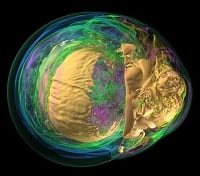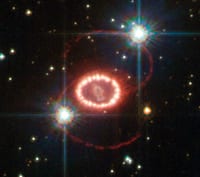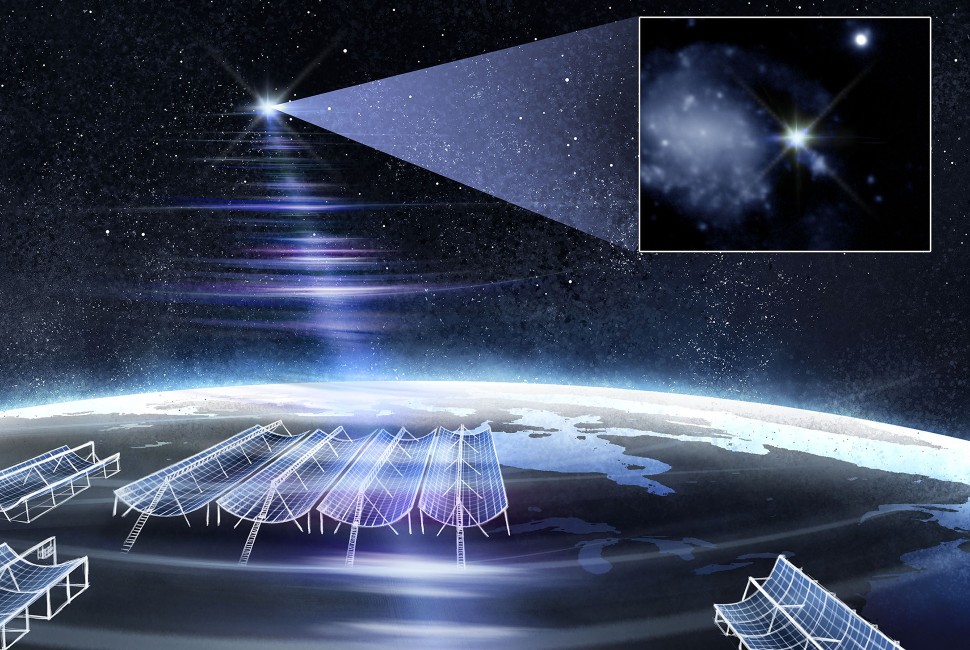In the online application form, accessible from the applications page, you will list your top 5 choices for your summer research project from the options described below.
Please note: these descriptions provide the general research area of each faculty mentor. Each year, our REU students pursue unique, timely and important projects with the faculty mentors. Specific projects will be decided upon through discussions between students and mentors.
For all questions, please contact ciera-reu@northwestern.edu.
RESEARCH PROJECT DESCRIPTIONS
Dr. Alvin Bayliss
Astrobiology, applied math, and high performance computing
Astrobiologists study of the origin, evolution, distribution, and future of life in the universe. This includes research into the potential for life to adapt to challenges on Earth and in space. This project will involve studying the evolution of two competing species with nonlocal competition. The two species will be modeled by a system of two coupled partial differential equations for the populations which will account for species diffusion, natural birth rates for each species and intraspecies and interspecies competition, reflecting a competition for a scarce resource. In many real-life ecosystems the competition terms are nonlocal. This means that at each point in space they depend on a weighted average of the populations in a neighborhood of that point, rather than the populations only at that point. One way to visualize this is that if the competition involves water in a stream as a scarce resource, the effect of the competition depends on the average of the animals drinking from the stream not just the population at any fixed point along the stream. This nonlocality makes the equations of the model integro-differential equations, i.e., the equations have both derivative terms and integral terms. Nonlocality can have a very significant effect on the evolution of the populations of the two species. In this project the role of nonlocality will be studied both by analytic methods and by computational methods.
Dr. André de Gouvêa
Cosmological, astrophysical and laboratory neutrinos: theoretical physics
Dr. de Gouvêa’s research group uses neutrinos as probes of the standard model of particle physics. Experiments have found evidence for new physics, first manifested in the leptonic sector in the form of neutrino masses. What does that tell us about the physics at very short distance scales? Are neutrinos like the quarks and charged leptons, or are they special? The student will investigate the properties of laboratory, astrophysical and cosmological neutrinos in the context of these questions.
Dr. Tarraneh Eftekhari
Tracing the Origins of Energetic Transients
This project will explore the properties and environments of energetic transients in collaboration with Dr. Tarraneh Eftekhari, whose research spans a wide range of phenomena from supernovae to fast radio bursts (FRBs). Using telescopes across the electromagnetic spectrum — including the Very Large Array, Gemini Observatory, and Chandra X-ray Observatory — Dr. Eftekhari investigates the physical mechanisms behind these events as well as their cosmic environments to shed light on their underlying origins. This work includes studying the mass-loss histories of massive stars in the centuries before they explode as supernovae through detailed radio observations, in addition to uncovering the elusive origins of FRBs by analyzing their host galaxies in the optical and searching for multi-wavelength counterparts in radio and X-ray bands. Methods will involve data reduction using existing pipelines for radio, optical, and X-ray observations, followed by analysis of the results using Python-based tools to extract physical properties and interpret the environments of these transients. By combining observations across multiple wavelengths, this project aims to shed light on the processes that drive these energetic transients and their role in shaping the universe.
 Dr. Claude-André Faucher-Giguère
Dr. Claude-André Faucher-Giguère
Using supercomputer simulations to understand the formation of galaxies
Our group develops large-scale simulations that follow, in unprecedented detail, the formation of galaxies from the Big Bang all the way to the present time. These cosmological simulations are evolved on massively parallel supercomputers and produce extremely rich data sets that we use to address a wide variety of key scientific questions in astrophysics and cosmology, including the processes that regulate star formation, the co-evolution of galaxies and supermassive black holes, and the interaction of galaxies with their cosmological environment. A summer project in our group would typically consist of analyzing simulations to investigate some of these questions. Another possible emphasis would be on the development of effective scientific visualization techniques to enable new discoveries using the complex simulation data. Due to the computational nature of the research, prior programming experience (especially in Python) and familiarity with Linux will be an asset to hit the ground running.
 Dr. Wen-fai Fong
Dr. Wen-fai Fong
Unravel the Mysteries Enshrouding Cosmic Explosions
Dr. Fong and her research group uses a large variety of telescopes on the ground and in space that span radio, optical, near-infrared, and X-ray wavelengths (no wavelength is left behind!) to investigate cosmic explosions, which include gamma-ray bursts, fast radio bursts, and electromagnetic emission from gravitational wave sources. She studies these explosive transients and their host galaxy environments to answer questions about the energy sources powering these transients, the nature and composition of material ejected from these events, the types of environments in which the explosions take place, and what the host galaxies can tell us about the progenitor sources.
 Dr. Mark Gorski
Dr. Mark Gorski
Astrochemistry In and Around Supermassive Black Holes
Dr. Gorski’s research focuses on the extreme environments at the centers of galaxies. His work combines high-resolution observational strategies with innovative data processing methods to reveal structures around supermassive black holes. This research helps us understand how black holes and galaxies interact. He is particularly interested in comparing our own supermassive black hole at the center of the Milky Way to black holes undergoing rapid phases of evolution in active galactic nuclei (AGN). This work illuminates how black holes influence galactic and cosmic evolution. REU students will contribute to investigating the physics and chemistry behind these fascinating structures, learning about interferometry and building data analysis algorithms.
 Dr. Cliff Johnson
Dr. Cliff Johnson
Star Clusters and Star Formation in the Local Group
Dr. Johnson studies star clusters and star formation within the Local Group — the Milky Way’s closest galactic neighbors. Using images from the Hubble Space Telescope and the CTIO Blanco Dark Energy Camera, his work analyzes the stellar populations in these nearby galaxies, down to the scale of individual stars. Impressive datasets from multiple surveys (including PHAT, PHAST, PHATTER, SMASH, and DELVE) provide us with a detailed view of star and cluster formation and the capability to answer long-held questions. Dr. Johnson uses these data to investigate how massive clusters are formed (or not) within different galactic environments, the number and type of massive stars contained in these clusters, and how the cluster and field star populations differ (or not) from each other over the galaxy’s history. Dr. Johnson work incorporates contributions from citizen science volunteers through his on-going Zooniverse project, the Local Group Cluster Search.
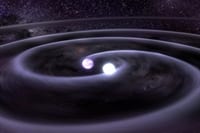 Dr. Vicky Kalogera
Dr. Vicky Kalogera
Compact Object Astrophysics Across Messengers
Dr. Kalogera works on understanding the astrophysics of massive stars and their remnants – black holes and neutron stars – as they form, evolve, and die together in binaries. Her group uses computational astrophysics, data analysis, and machine learning to make theoretical predictions and understand observations of these binaries from both electromagnetic sources and gravitational-wave events. The student joining her group will have the option to work on detecting and interpreting detections of gravitational waves from the collisions of black holes and neutron stars as part of her work in the LIGO Scientific Collaboration or help model the progenitors of those collisions and other compact binaries using state-of-the-art, next-generation, stellar modeling software as part of the POSYDON Collaboration.
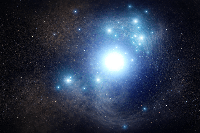 Dr. Charlie Kilpatrick
Dr. Charlie Kilpatrick
Observing Explosive Transients
Dr. Kilpatrick utilizes optical and infrared imaging of the local Universe to find counterparts to supernovae and gravitational wave events. Although many supernovae and gravitational wave events are detected per year, only a few are detected at distances and sky locations where we can precisely localize and track their multi-wavelength counterparts, which enables us to determine the pathways through which massive stars evolve, whether they form neutron stars or black holes, and whether they explode by themselves or in binary star systems. Dr. Kilpatrick uses data from across the globe and space telescopes to aid this research, especially the James Webb Space Telescope, Hubble Space Telescope, Spitzer, Gemini, and Keck as well as smaller telescopes in California, New Mexico, Chile, Australia, and South Africa. Students can choose to work with these data or on Python-based projects involving stellar evolution models, analyzing the features of supernova light curves and spectra, and designing tools for localizing gravitational wave counterparts.
 Dr. Yoram Lithwick
Dr. Yoram Lithwick
Dynamics of Exoplanets
Thousands of exoplanets have been discovered. But many of their properties remain unexplained. For example, how do exoplanets end up on their observed orbits, with their observed masses and spacings? In this project, the student will simulate the late
stages of planet formation, i.e., when the planets are nearly fully-formed, but there are still many small planetesimals in the vicinity. The goal is to see how the planetesimals sculpt the planets’ orbits, and whether that can explain observed features of exoplanetary systems. The simulations will be done with the popular REBOUND code. Some experience with Python or C is desirable.
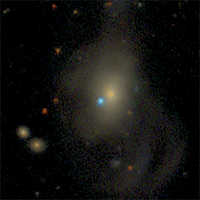 Dr. Adam Miller
Dr. Adam Miller
Stellar Explosions and Variable Stars
Dr. Miller is focused on understanding stellar systems that explode and the evolutionary pathways that lead to such explosions. As a member of the Zwicky Transient Facility (ZTF), Dr. Miller and his group have access to one of the preeminent precursors to the Vera C. Rubin Observatory. Research in the Miller group is focused on the ZTF Bright Transient Survey, which aims to spectroscopically classify every stellar explosion found by ZTF as well as obtaining early observations of Type Ia supernovae in order to understand how white dwarf stars explode. In addition to ZTF, we use telescopes from across the globe (Arizona, Australia, California, Chile, Hawaii) and in space (Hubble Space Telescope, Swift Telescope) to probe the physics of these explosions. Students will analyze ZTF data to search for young SNe and study these events using contemporaneous optical spectroscopy and ultraviolet photometry.
 Dr. Elvira Mulyukova
Dr. Elvira Mulyukova
Planetary Dynamics, Rock Physics
Why did life evolve on Earth but not on any other known terrestrial planet? One of the necessary ingredients for planetary habitability is long-term climate stability, which on Earth is achieved through the interplay between oceans, atmosphere, and rocky layers. Rocks make up most of the Earth’s volume, and rock deformation governs the formation of tectonic plates, and all their attendant phenomena, such as mountain building, earthquake cycles, volcanism, and other geological processes, including the long-term carbon cycle and climate variation. Other terrestrial planets in our Solar System are mostly made up of rocks as well and are compositionally similar to Earth, and yet they do not have plate tectonics, liquid oceans or complex life. Dr. Mulyukova uses physical models of rock deformation to understand the evolution of terrestrial planets and explain their divergent paths. The student will work with Dr. Mulyukova to compare geological features on Earth and other solid planetary bodies (including Venus, Mars and the Moon), using observations from past planetary missions to explain the similarities and differences between planetary surfaces and interiors. The results from the project will help answer the question of whether and why Earth is unique and provide an important link between space missions and geological expeditions on our own planet.
 Dr. Giles Novak
Dr. Giles Novak
Star formation, Instrumentation, and Observation
Dr. Novak’s research group specializes in the development of astronomical instrumentation used to study star/planet formation. Students in Novak’s group build instrumentation, analyze data, and work on science results. Available student projects include analysis of calibration and science data from the TolTEC camera that recently was installed on the Large Millimeter Telescope (Gran Telescopio Milimétrico) situated at the 15,000 foot summit of Volcán Sierra Negra in central Mexico, and applying advanced mapmaking algorithms on high performance computing clusters to data collected with TolTEC and data from the BLAST balloon-borne telescope. With its 50 m diameter primary mirror, the Large Millimeter Telescope (pictured here during TolTEC installation) is the largest telescope in the world for observations in the millimeter wavebands.
 Dr. Magdalena Osburn
Dr. Magdalena Osburn
Lipid Biomarkers in Subsurface Environments
Biological molecules record information about both their formation environment and the organisms that produce them. Dr. Osburn uses research tools from organic geochemistry, microbiology, and stratigraphy to investigate microbial and biogeochemical cycling in both modern and ancient environments. The student will work with Dr. Osburn and her group to study a class of molecules called lipids, found in microbes on Earth, and s/he will focus particularly on microbes from subsurface environments on Earth. Our understanding of these subsurface Earth microbes will allow us to prepare for future experiments in Mars landers and to hypothesize about conditions necessary for life to exist on (or inside of) asteroids and exoplanets. Students with a background in biology and/or chemistry are particularly encouraged to apply.
 Dr. Fred Rasio
Dr. Fred Rasio
Black holes, stellar dynamics, and high performance computing
Globular clusters (GCs) are very crowded stellar environments where dynamical interactions frequently trigger the formation of many exotic objects. In particular, GCs may form many merging compact-object binaries during their life, making them unique gravitational-wave source factories. Thanks to ground-based and (soon) space-based gravitational-wave interferometers, we can literally “hear” the coalescence and merger of many compact-object binaries in the Universe, but what we still do not know is how such fascinating systems formed and evolved. Understanding in more detail the evolution of stars and compact objects in GCs may be the key to answer these open questions and to ultimately provide an astrophysical interpretation to present and forthcoming gravitational-wave detections. The student will work closely with Dr. Rasio and the other members of his research group, who will provide training in the area of stellar dynamics, stellar evolution and high-performance computing. Specifically, the student will work with state-of-the-art computer simulations of globular clusters to study the formation and evolutionary pathways of different exotic objects, including merging compact-object binaries. Many different projects, focusing on different specific aspects, are available and easily accessible to undergraduates. Many of these projects require only a basic knowledge of classical mechanics and some computing experience.
 Dr. Selim Shahriar
Dr. Selim Shahriar
Gravitational waves , instrumentation, and high-performance computing
The Shahriar group is exploring the feasibility of realizing a table-top gravitational wave detector (GWD) using two orthogonal, square-shaped ring lasers. Each has its mirror displacement sensitivity drastically enhanced – by a factor as large as a million – by the use of the superluminal effect produced via anomalous dispersion. In this project, the student will work closely with one of the graduate students in Dr. Shahriar’s research group to model the basic behavior of the GWD under various conditions. This theoretical modeling requires basic familiarity with atom-field interaction, suitable for an advanced undergraduate student.
 Dr. Tjitske Starkenburg
Dr. Tjitske Starkenburg
Galaxy evolution and its observational signatures
Galaxy evolution is an intricate process: complex combinations of physical processes lead to the galaxy properties we observe. Dr. Starkenburg uses large galaxy simulations that describe the formation of thousands of galaxies as well as detailed simulations of individual galaxies and specific physical processes to better understand this connection. One focus of research is on the outer parts of galaxies, the stellar halos, where smaller galaxies get accreted, are stripped apart by tidal forces to form thin streams of stars, that eventually disperse. These small substructures are sensitive tracers to the gravitational potential, providing clues on the masses of galaxies and the nature of dark matter. Going from galaxy formation theory all the way to predicting what observations will see, we can identify which particular observations can constrain our theories. Possible student projects include theoretical modeling, analysis of large galaxy simulations, making predictions for observations, and comparing observational results to theory.
 Dr. Allison Strom
Dr. Allison Strom
Studying how galaxies form and evolve in the early Universe
The Strom group uses some of the largest telescopes on the ground and in space to study how galaxies grew in the first half of the Universe’s history. Specifically, they use spectroscopy (the amount of light produced by galaxies at different wavelengths, or colors) to learn about the internal properties of galaxies, such as star formation rate, chemistry, density, and ionization. Establishing how these properties change across the galaxy population and across cosmic time is critical to understanding the physical processes that cause different galaxies to follow different evolutionary pathways. A summer student working with Dr. Allison Strom and Dr. Yijia Li, a postdoc at CIERA, would use advanced physical models to interpret spectroscopic observations of distant galaxies. We will investigate the star formation properties and chemical abundances of these galaxies and quantify how different modeling assumptions influence the inferred galaxy properties.
 Dr. Alexander Tchekhovskoy
Dr. Alexander Tchekhovskoy
Black holes, neutron stars, accretion, jets, and outflows
Dr. Tchekhovskoy’s group works on computational astrophysics, including large-scale numerical simulations as well as algorithm and code development. Dr. Tchekhovskoy’s research focuses on black holes, neutron stars, accretion, jets, and outflows, ranging from investigating the basic physics of astrophysical jets and disks to applying the physics results to interpreting observations and directly predicting electromagnetic emission from simulations for comparison to observations. The methods include the numerical codes, which have been co-developed by students within the group, capable of massively parallel simulations of magnetized fluid dynamics around black holes and neutron stars. The students will be trained in the code development, massively parallel computing, and the analysis and interpretation of the simulation results in a wide range of astrophysical contexts.
 Dr. Suzan van der Lee
Dr. Suzan van der Lee
Martian seismology
Dr. van der Lee and her research group analyze waveform data (time series) of ground motion, called seismograms. Seismograms can contain seismic-wave signals from earthquakes, but also contain signals from many other processes and events, such as icequakes, atmospheric circulation, solid tides, explosions, ocean currents, storms, etc. A consortium of universities with seismology researchers has established a global, open data archive for seismograms recorded on Mars and Earth, with the caveat that data volumes for each planet reach from 3 years of data from one detector on Mars, to several decades of data from thousands of detectors on Earth. Student research would focus on the origins of marsquakes, starting with their hypocenters and faulting mechanisms, using a novel method designed specifically for data from Mars. Results will be benchmarked against and will expand findings by the InSight mission team. Alternatively, a research project focusing on earthquakes can be identified in collaboration with Dr. van der Lee.
 Dr. Jason Wang
Dr. Jason Wang
Images, Orbits, and Spectra of Exoplanets
Our group uses cutting edge technology on the largest telescopes on the ground and in space to take images of exoplanets, planets orbiting other stars. Current technologies are only sensitive to gas giant exoplanets, but studying these planets is crucial for understanding how planetary systems form and evolve. By monitoring the planetary systems over time, we can watch the planets move and trace out their orbits. Using new spectrograph technology we have developed, we can perform spectroscopy of their atmospheres to analyze what these planets are made out of. Students will have a choice of projects that span exoplanet detection, orbital monitoring, and spectroscopic analysis.




